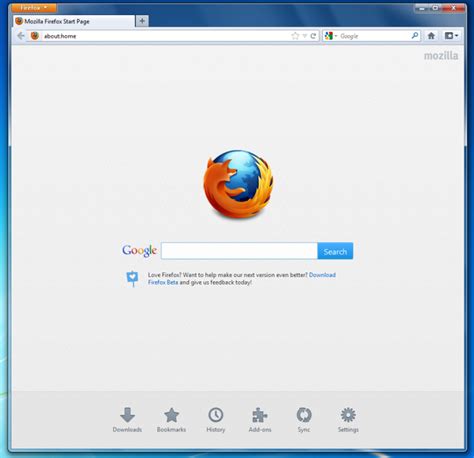Install opengl
Author: c | 2025-04-24

Verify OpenGL Installation: OpenGL Viewer Tools: Install a tool such as OpenGL Extensions Viewer to verify the OpenGL version supported by your GPU and check if it is Verify OpenGL Installation: OpenGL Viewer Tools: Install a tool such as OpenGL Extensions Viewer to verify the OpenGL version supported by your GPU and check if it is

Installing OpenGL and Running OpenGL Programs on
Modern graphics drivers. Ensure you have the correct drivers installed for your GPU by using your distribution’s package manager.Install Development Libraries: You can install OpenGL development packages with commands like:sudo apt-get install mesa-utilssudo apt-get install libgl1-mesa-devCompile Your Code: Use tools like GCC to compile OpenGL programs:gcc -o myapp myapp.c -lGL -lGLU -lglutFAQYes, OpenGL remains relevant for many cross-platform applications, including video games, simulations, and scientific visualizations. However, newer APIs like Vulkan and Metal offer more modern features and better performance in some cases.Yes, OpenGL ES (OpenGL for Embedded Systems) is a subset of OpenGL designed specifically for mobile devices and embedded systems. Many mobile games and apps use OpenGL ES for rendering.Vulkan is a newer, low-level API designed to provide more control over the GPU and better performance on modern hardware. OpenGL, by comparison, is higher-level and easier to work with but can be less efficient than Vulkan for certain applications.Yes, you can use OpenGL in Python with libraries like PyOpenGL, which is a Python binding to the OpenGL API.On Windows, you can check your OpenGL version by running glxinfo | grep "OpenGL version" in a terminal. On Linux, you can run the command glxinfo | grep OpenGL.OpenGL is a versatile and powerful graphics API that has played a critical role in the development of cross-platform graphics applications. While newer technologies like Vulkan are gaining popularity, OpenGL continues to be a widely used tool for rendering high-quality 2D and 3D graphics. Whether you’re developing video games, simulations, or CAD software, understanding how OpenGL works can give you a solid foundation in graphics programming. Verify OpenGL Installation: OpenGL Viewer Tools: Install a tool such as OpenGL Extensions Viewer to verify the OpenGL version supported by your GPU and check if it is Verify OpenGL Installation: OpenGL Viewer Tools: Install a tool such as OpenGL Extensions Viewer to verify the OpenGL version supported by your GPU and check if it is Improvements in performance. Some important versions include:OpenGL 1.x: This is the original version that introduced basic 2D and 3D rendering capabilities. It relied on fixed-function pipelines, meaning developers had to rely on predefined behaviors for rendering, like lighting and shading.OpenGL 2.x: Introduced in 2004, this version brought in the programmable pipeline, allowing developers to write their own shaders (small programs that run on the GPU) for more customized rendering.OpenGL 3.x: Launched in 2008, it deprecated a lot of the older, fixed-function pipeline functions and introduced new features that made it easier to write high-performance code.OpenGL 4.x: Released in 2010, this version introduced features such as tessellation shaders, enhanced rendering techniques, and better support for modern GPUs.OpenGL 4.6: The latest version (as of 2024), OpenGL 4.6, was released in 2017 and provides a wide range of advanced features like support for SPIR-V (a shader compilation intermediate language), enhanced texture management, and improved performance optimizations.Each new version of OpenGL builds on the previous one, offering more powerful tools for developers to use in their graphics rendering tasks.How to Install OpenGLInstalling OpenGL largely depends on your operating system and hardware, but here’s a basic guide on how to get OpenGL running on different platforms:WindowsInstall Graphics Drivers: OpenGL comes bundled with your GPU’s driver software. Make sure you have the latest drivers installed from the GPU manufacturer’s website (NVIDIA, AMD, or Intel). These drivers automatically include OpenGL support.Install Development Libraries: To develop applications using OpenGL, you’ll need to install additional libraries such as GLFW or GLUT. These provide windowing support and input handling.Set Up Development Environment: You can use development environments like Visual Studio. Make sure to include necessary libraries and link them to your project to use OpenGL functions.macOSInstall Xcode: Xcode is the development environment on macOS, and it includes OpenGL support. However, Apple has deprecated OpenGL in favor of Metal, so you may need to install older versions or use libraries that support OpenGL.Use Brew: You can also install additional OpenGL utilities via Homebrew using the following command: brew install glfwLinuxInstall Graphics Drivers: For Linux users, OpenGL support is included in mostComments
Modern graphics drivers. Ensure you have the correct drivers installed for your GPU by using your distribution’s package manager.Install Development Libraries: You can install OpenGL development packages with commands like:sudo apt-get install mesa-utilssudo apt-get install libgl1-mesa-devCompile Your Code: Use tools like GCC to compile OpenGL programs:gcc -o myapp myapp.c -lGL -lGLU -lglutFAQYes, OpenGL remains relevant for many cross-platform applications, including video games, simulations, and scientific visualizations. However, newer APIs like Vulkan and Metal offer more modern features and better performance in some cases.Yes, OpenGL ES (OpenGL for Embedded Systems) is a subset of OpenGL designed specifically for mobile devices and embedded systems. Many mobile games and apps use OpenGL ES for rendering.Vulkan is a newer, low-level API designed to provide more control over the GPU and better performance on modern hardware. OpenGL, by comparison, is higher-level and easier to work with but can be less efficient than Vulkan for certain applications.Yes, you can use OpenGL in Python with libraries like PyOpenGL, which is a Python binding to the OpenGL API.On Windows, you can check your OpenGL version by running glxinfo | grep "OpenGL version" in a terminal. On Linux, you can run the command glxinfo | grep OpenGL.OpenGL is a versatile and powerful graphics API that has played a critical role in the development of cross-platform graphics applications. While newer technologies like Vulkan are gaining popularity, OpenGL continues to be a widely used tool for rendering high-quality 2D and 3D graphics. Whether you’re developing video games, simulations, or CAD software, understanding how OpenGL works can give you a solid foundation in graphics programming.
2025-04-08Improvements in performance. Some important versions include:OpenGL 1.x: This is the original version that introduced basic 2D and 3D rendering capabilities. It relied on fixed-function pipelines, meaning developers had to rely on predefined behaviors for rendering, like lighting and shading.OpenGL 2.x: Introduced in 2004, this version brought in the programmable pipeline, allowing developers to write their own shaders (small programs that run on the GPU) for more customized rendering.OpenGL 3.x: Launched in 2008, it deprecated a lot of the older, fixed-function pipeline functions and introduced new features that made it easier to write high-performance code.OpenGL 4.x: Released in 2010, this version introduced features such as tessellation shaders, enhanced rendering techniques, and better support for modern GPUs.OpenGL 4.6: The latest version (as of 2024), OpenGL 4.6, was released in 2017 and provides a wide range of advanced features like support for SPIR-V (a shader compilation intermediate language), enhanced texture management, and improved performance optimizations.Each new version of OpenGL builds on the previous one, offering more powerful tools for developers to use in their graphics rendering tasks.How to Install OpenGLInstalling OpenGL largely depends on your operating system and hardware, but here’s a basic guide on how to get OpenGL running on different platforms:WindowsInstall Graphics Drivers: OpenGL comes bundled with your GPU’s driver software. Make sure you have the latest drivers installed from the GPU manufacturer’s website (NVIDIA, AMD, or Intel). These drivers automatically include OpenGL support.Install Development Libraries: To develop applications using OpenGL, you’ll need to install additional libraries such as GLFW or GLUT. These provide windowing support and input handling.Set Up Development Environment: You can use development environments like Visual Studio. Make sure to include necessary libraries and link them to your project to use OpenGL functions.macOSInstall Xcode: Xcode is the development environment on macOS, and it includes OpenGL support. However, Apple has deprecated OpenGL in favor of Metal, so you may need to install older versions or use libraries that support OpenGL.Use Brew: You can also install additional OpenGL utilities via Homebrew using the following command: brew install glfwLinuxInstall Graphics Drivers: For Linux users, OpenGL support is included in most
2025-04-21Required to build and link executables that make use of OpenGL. Setup Modern OpenGL 4.1 on macOS (Xcode, GLFW and GLEW)1. Install GLFWFirst step is to create an OpenGL window. GLFW is an Open Source, multi-platform library for creating windows with OpenGL, to install GLFW first download its files from www.glfw.orgExtract the GLFW folder and its contents will look like thisDownload and install CMake to build GLFW. Goto www.cmake.org/download/, download CMake and install for MAC OS XIf Xcode is not installed. Download and install Xcode from Mac App Store.Create a new folder Build inside the GLFW folderOpen CMake, click on Browse Source button to select the GLFW folder (make sure that CMakeLists.txt) is located inside that folder. After that, click on Browse Build button and select the newly created Build folder in previous step.Now Click on Configure button and select Xcode as generator with Use default native compilers option, and click Done.Tick on BUILD_SHARED_LIBS option and then click on Configure button again and finally click Generate button.After generation CMake should look like thisNow Open Finder and goto /usr, create a folder name local if not already there. Open the local folder and create two folders include and lib if not already there.Now open the GLFW folder and goto Build (where CMake had built the files). Open GLFW.xcodeproj file in Xcode.Select install > My Mac and then click on run (Play shaped button).It is now successfully installed (ignore the warnings).To make sure Open Finder and goto /usr/local/lib folder and three GLFW library files will be already present there (If not then open Build folder inside GLFW folder and go to src/Debug copy all files to /usr/local/lib)Open Finder and goto /usr/local/include and a GLFW folder will be already present there with two header files inside it by name of glfw3.h and glfw3native.h2. Install GLEWGLEW is a cross-platform library that helps in querying and loading OpenGL extensions. It provides run-time mechanisms for determining which OpenGL extensions are supported on the target platform. It is only for modern OpenGL (OpenGL version 3.2 and greater which requires functions to be determined at runtime). To install
2025-03-29I run ubuntu 20.04 under virtualbox on a Windows 10 host. Trying to run kitty, I get the GLFW error reported elsewhere:Failed to create GLFW temp window!The solution for which seems to be "Install at least v3.3 of OpenGL for kitty to use". I would gladly install the necessary OpenGL version, but need some guidance on what packages that means I need to install.glxinfo reports this for the OpenGL settings on the ubuntu system running under virtualbox:OpenGL vendor string: VMware, Inc.OpenGL renderer string: SVGA3D; build: RELEASE; LLVM;OpenGL version string: 2.1 Mesa 21.0.3OpenGL shading language version string: 1.20OpenGL extensions:OpenGL ES profile version string: OpenGL ES 2.0 Mesa 21.0.3OpenGL ES profile shading language version string: OpenGL ES GLSL ES 1.0.16OpenGL ES profile extensions:Is there an environment variable or config file setting that would let kitty run in this setup without any further software installed?I also see that the kitty version supplied with ubuntu 20.04 is 0.15.0, is there a repository from which I could use apt install to upgrade that to a newer version?Any help or advice appreciated.Peter
2025-04-05